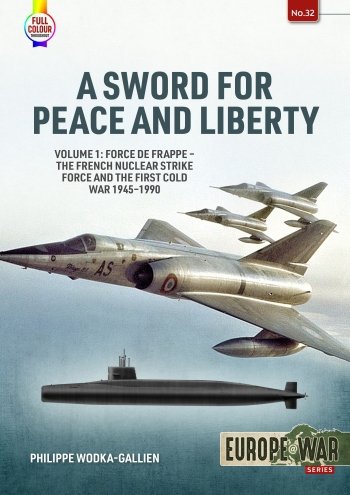-
Załączniki bezpieczeństwa
Załczniki do produktuZałączniki dotyczące bezpieczeństwa produktu zawierają informacje o opakowaniu produktu i mogą dostarczać kluczowych informacji dotyczących bezpieczeństwa konkretnego produktu
-
Informacje o producencie
Informacje o producencieInformacje dotyczące produktu obejmują adres i powiązane dane producenta produktu.HELION
-
Osoba odpowiedzialna w UE
Osoba odpowiedzialna w UEPodmiot gospodarczy z siedzibą w UE zapewniający zgodność produktu z wymaganymi przepisami.
This book reconstructs the solid continuity of the nuclear strategy of the Republic of France, one of five permanent members of the Security Council of the United Nations. Over the last 60 years France has developed its own indigenous nuclear capability, including not only nuclear warheads, but the delivery platforms for them: strategic bombers, tactical aircraft, tactical ballistic missiles, nuclear-powered submarines, intercontinental ballistic missiles, and space assets. The trauma of the German Blitzkrieg from May 1940 informed the vision of the leaders in which French sovereignty was mandatory –in political, military, and technological approaches. The resulting effort was massive in financial terms yet shared both by the left- and right-wing of the political landscape: it progressively even obtained the support of the French Communist Party! The spirit of resistance drove the ambition, with the motto, ‘no more military invasion’. That said, and as this book highlights, much of the resulting projects were – secretly or openly – run in cooperation with the United Kingdom and the United States of America. Indeed, diplomacy was obliged to find its way between Washington and London.
Volume 1 focuses on the launch of the nuclear ambition just after the liberation of the country, and then reconstructs the build-up of the strategic triad. To obtain the support of the politicians and the opinions, significant efforts were made by the experts on the ‘bomb’: free initiatives of officers and academics were consolidated by the official communications of the Ministry of Defence. The first generation of resulting weapons included not only multiple types of A-bombs, but also the Dassault Mirage IV strategic bomber, Mirage III and SEPECAT Jaguar tactical combat aircraft, Pluton mobile tactical ballistic missile, the Redoutable-class nuclear submarines, with S2 and S3 ballistic missiles sheltered in the Alps of the Provence region. For the related research and development, thousands of scientists, engineers, and skilled workers were mobilised. As a result, the nuclear programme of France in the 1960s and 70s became part of a global transformation of the country, resulting in an economic boom symbolized by aircraft like the Caravelle and Concorde, by the construction of motorways, the emergence of the Citroën DS car, but also of space launchers, the spread of telecommunications, high-speed trains and the construction of 19 nuclear plants. The administration and its state-owned laboratories were focused on the target: to give France a nuclear arsenal to protect the country from military invasion and to provide it with liberty of action.
The atomic bomb was developed rapidly, but have faced difficulties in mastering the fusion concept necessary for the H-bomb. The problem was fixed with help from London. Projects like Dassault's Super Mirage IV, very long range missiles, giant aircraft carriers, the Dassault Mirage 4000, and cancelled projects are described in a separate chapter, and the book also depicts nuclear pop culture in France.
Ultimately, the French nuclear arsenal became the mirror of an intellectual architecture and its consideration of a nuclear strategy. It resulted in the idea of ‘deterrence of the strong by the weak’. Therefore, and because of the small number of weapons and warheads, technological performance was a must. In the latter stages of the Cold War, the second generation of systems was launched: the Mirage 2000, ASMP missile, and a new generation of submarines. As the Cold War ended in the early 1990s, President Jacques Chirac reduced the arsenal, and of course the budgets, and took the decision that led to the situation today: nuclear simulation, and a limited but credible arsenal.








